#rosetta howard
Text
youtube
3 notes
·
View notes
Text
youtube
Rosetta Howard & The Harlem Hamfats - If You're A Viper
0 notes
Text
Character Inspirations♡
Long post ahead but here’s some character inspiration boards for my ocs!
Note that fandorm ocs aren’t on here! Hope you guys like it!

Ellis Clawthorne’s inspirations
Aurora (Sleeping Beauty)
Belle (Beauty and the Beast)
Annette Dominic (Fire Emblem Three Houses)
Anastasia (Anastasia)
Suzu Naito/Belle (Belle)
Nilou (Genshin Impact)
Yashiro Nene (Toilet Bound Hanako Kun)
Tohru Honda (Fruits Basket)
Nobara Kugisaki (Jujutsu Kaisen)

Victoria Le Fay’s inspirations
Constance Von Nuvelle (Fire Emblem Three Houses)
Eula (Genshin Impact)
Lisa (Genshin Impact)
Flora, Fauna, and Merryweather (Sleeping Beauty)
Sweetheart (Omori)
Lady Alcinia Dimitrescu (Resident Evil: Village)
Jessie (Pokémon)

Ivy Villosa’s inspirations
Rosetta (Disney Fairies)
Poison Ivy (DC)
Glinda (Wicked)
Elle Woods (Legally Blonde)
Charlotte La Bouff (Princess and the Frog)
Hilda Goneril (Fire Emblem Three Houses)
Rarity (My Little Pony)

Artemis Woodman’s inspirations
Beidou (Genshin Impact)
Nana Osaki (Nana)
Revy (Black Lagoon)
Westley (The Princess Bride)
Maki Zenin (Jujutsu Kaisen)
Rick O’Connell (The Mummy)

Aimée Amore’s inspirations
Regina George (Mean Girls)
Sharpay Evans (High School Musical)
Aphrodite (Olympians series)
Marin Kitagawa (My Dress-Up Darling)
Katherine Howard (SIX the musical)
Karen Smith (Mean Girls)
Aphrodite (Hades)

Gwendolyn Schnee’s inspirations
Cinderella (Cinderella)
Marianne von Edmund (Fire Emblem Three Houses)
Mey-Rin (Black Butler)
Periwinkle (Disney Fairies)
Yor Forger (SpyXFamily)
Kamisato Ayaka (Genshin Impact)
Noelle (Genshin Impact)
Shouko Komi (Komi Can’t Communicate)

Fabian Nacht’s inspirations
Flynn Rider (Tangled)
Dimitri (Anastasia)
Julian Devorak (Anastasia)
Dean McCoppin (The Iron Giant)
Ian Malcolm (Jurassic Park)
Westley (The Princess Bride)
Mischa Bachinski (Ride the Cyclone)

Astrid Aneira’s inspirations
Anna (Frozen)
Giselle (Enchanted)
Amber (Genshin Impact)
Portia Devorak (The Arcana)
Sophie Sheridan (Mamma Mia!)
Rapunzel (Tangled)

Stella Vega’s inspirations
The Blue Fairy (Pinocchio)
Evangeline (The Princess and the Frog)
The Fairy Godmother (Cinderella)
Farrah Goodfairy (Ever After High)
Gigi Grant (Monster High)
Glinda the Good Witch (The Wizard of Oz)

Odette Cygnet’s inspirations
Duchess Swan (Ever After High)
Odette (Barbie in Swan Lake)
Princess Kraehe (Princess Tutu)
Nina Sayer (Black Swan)
Odette (The Swan Princess)
Shenhe (Genshin Impact)
#ellis clawthorne#victoria le fay#ivy villosa#artemis woodman#aimée amore#gwendolyn schnee#fabian nacht#Fabian is in fact the name of the Flynn rider oc I teased!#OH BOY THAT WAS LONG#astrid aneira#stella vega#odette cygnet
15 notes
·
View notes
Text

Dr. Roland Scott (April 18, 1909 - December 10, 2002) was a pediatrician and researcher, known for his pioneering work on sickle cell disease and his advocacy on behalf of patients impacted by the illness.
He was born in Houston. His family moved to Kansas City, Missouri, where he completed high school. He attended Howard University, where he received both his BS and his MD. He married Sarah Rosetta Weaver (1935) and the couple had three children. He did his internship year at the Kansas City General Hospital and completed his pediatric residency in Chicago.
He became a professor of pediatrics at Howard University and was promoted to director of the department. He chaired the entire pediatrics department. He was trained as a pediatrician and an allergist, he was troubled by the many children he saw who had symptoms of sickle cell disease. He held private practice hours where he treated Black children and families who were denied proper healthcare.
He published a report on the incidence of red cell sickling in newborn infants which helped to change the modern understanding of the disease and would lead to the implementation of newborn screening tests that are now standard practice. He published throughout his career on children’s development, allergies, and sickle cell disease.
He led other physicians in lobbying Congress to pass the Sickle Cell Anemia Control Act of 1971 which provides federal funding for research and treatment of the disease. He opened the Howard University Center for Sickle Cell Disease in 1972 and he remained its director until his retirement. He continued to teach courses at Howard on pediatrics and child health. He received many honors and awards for his work including the American Academy of Pediatrics’ Jacobi Award for his pioneering work on sickle cell anemia. He was cited as the premier authority on sickle cell diseases. #africanhistory365 #africanexcellence
0 notes
Photo
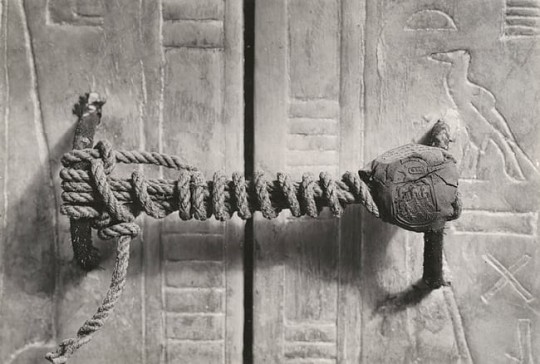
La maldición de la momia: la tumba de Tutankamón y los medios de comunicación modernos
El descubrimiento de Howard Carter en 1922 de la tumba de Tutankamón fue una noticia mundial, pero inmediatamente después la historia de la maldición de la momia (también conocida como La maldición del faraón), llegó incluso a ser más popular y sigue siéndolo hoy en día. Anteriormente al descubrimiento de Carter, las tumbas, los faraones y las momias atraían una atención significativa, pero no se acercaba al nivel de interés que el público mostró más tarde. La fascinación mundial por la cultura del antiguo Egipto comenzó con las primeras excavaciones y relatos de viajes que se publicaron en los siglos XVII y XVIII, pero ganó un impulso considerable en el siglo XIX después de que Jean-François Champollion (1790-1832), basándose en la obra de Thomas Young (1773-1829), descifrara los jeroglíficos egipcios por medio de la piedra de Rosetta y publicara sus descubrimientos en 1824.
Sigue leyendo...
0 notes
Text

Day 48- Film: Lost in Alaska
Release date: July 28th, 1952.
Studio: Universal
Genre: Comedy
Director: Jean Yarbrough
Producer: Howard Christie
Actors: Bud Abbott, Lou Costello, Mitzi Green, Tom Ewell, Iron Eyes Cody
Plot Summary: In 1890s San Francisco, firemen buddies Tom and George try to stop a man from committing suicide. They learn he is “Nugget” Joe, a gold prospector from Alaska who has struck it rich but lost his girl in the process. Comedic entanglements soon lead Tom and George to travel back to Skagway Alaska with Nugget Joe as he searches out his love Rosette.
My Rating (out of five stars): ***
I knew going into this that it probably wouldn’t be my preferred kind of humor, but I also knew I wouldn’t judge the film harshly solely because it wasn’t to my particular taste. Even though I didn’t find it hilarious, I can appreciate the skill of Abbott and Costello as comedians. They were both extremely likeable, especially Costello. He has such an innocent baby-face, and it pairs well with his befuddled buffoonery. I’d probably give this a lower rating than three stars if it were based purely on my enjoyment of the film, but I do think it deserves three stars as a decently made and executed comedy film.
The Good:
The camaraderie between Abbott and Costello. They were always entertaining to watch, and their familiarity and ease with each other was sweet and funny.
As I just wrote, I found something especially appealing about Lou Costello. That was a little surprising to me, because it’s not generally the goofy slapstick characters that I find most appealing.
Tom Ewell. He is always funny, and this movie is no exception. His facial expressions are worth the admission price alone. Even though I didn’t love all the jokes about suicide, he plays a desperate man just about as amusingly as possible.
Mitzi Green as Rosetta. I adored her! She was entertaining and funny with a unique kind of sparkle- much more than just something pretty for Ewell to pine over. She always drew my attention more than anyone when she was in a scene. Her singing voice was also great.
There were several gags that genuinely made me giggle.
It was a short simple comedy that didn’t try to be anything else. It knew what it was and spent 76 minutes playing it up.
The Bad:
The script definitely had some structure problems and holes in it. I understand the plot was essentially something to loosely contain the gags, but still...
When I knew the setting would be Alaska, I feared some stereotypes of the Eskimo people, and they were definitely there. There was a scene where two Eskimos were speaking broken English to each other when no white person was even around, for example. I wouldn’t say it was hugely offensive- they weren’t painted as bad guys or as stupid. There were just some stereotypes that were exploited for humor.
Joking about suicide. I’ve noticed this as a trend in media back then that has definitely dwindled today. I’ve seen lots of comedy gags in this project, both verbal and physical, about people who want to commit suicide, or even have committed suicide. Even though I found a lot of what Tom Ewell did as a suicidal character pretty funny, it still made me uncomfortable. I think we have greater sensitivity and awareness about the issue now. Even as a culture, it’s just something we don’t like joking about anymore.
0 notes
Photo

Infinite Pau Hana - November 30, 2022
“halaszyn mixtapes, vol. xx”
Hour 1
Devil’s Respite - Menahan Street band
Moment of Joy - Chicano Batman
Power of Three - Belle and Sebastian
Young Lungs - Stereolab
Gratuitous Theft in the Rain - Rehash
Take Me Nowhere - Medeski Martin and Wood
Modern Scene - Ghost Funk Orchestra
Greene Boy - GA-20
That Much Closer to Nothing - Chico Mann
Best Life for You - The Bombillas
Mino Di Mama - Quirino Do Canto
Hour 2
How Long Blues - Jimmy and Mama Yancey
If You’re a Viper - Rosetta Howard and Harlem Hamfats
3 A.M. Outside of Beaumont - The KLF
Poinciana - Alika Lyman Group
The Forgotten People - Thievery Corporation
Isela - The Mattson 2
Marine Radio - Brian Eno and Jah Wobble
Jazzed Carpenter - The High Llamas
January V - Max Roach
Hi-Tremolo - Gavin Byars
Hour 3
Tongo Barra - Vieux Farka Toure and Khruangbin
Love Thy Neighbor - Orlando Julius and the Heliocentrics
Disco Devil - Lee “Scratch” Perry
Sublunary - King Krule
One More Time - Cymande
Toumani Diabate - Ya Fama
Stone by Stone - Ikebe Shakedown
The Pharaohs Love Y’all - The Pharaohs
Dynamic Fashion Way - U-Roy
You Got to Learn to Let It Go - Sam Waymon
KTUH - 90.1 FM Honolulu, 91.1 FM North Shore, ktuh.org
0 notes
Photo

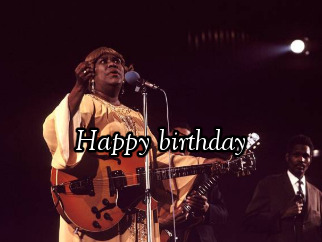
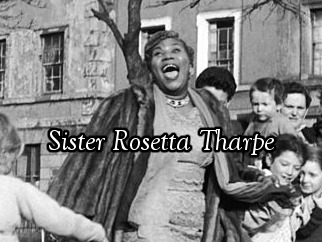


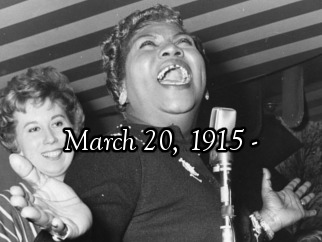


Happy birthday to the Godmother of Rock & Roll, Sister Rosetta Tharpe! (March 20, 1915 – October 9, 1973)
“She plays from the very soles of her feet all the way to the top of her head, and she gets the instrument.” - Brittany Howard (of Alabama Shakes)
“Mostly back in those days, [women] just sang, and she, you know, she brought a whole new thing to women that said, Hey, I can do that, too. That’s one thing I remember—that stood out to me. That she was actually a musician as well.” - Carla Thomas
“I heard my earliest heroes at the home of a blues record shop where I bought my first recording of Sister Rosetta Tharpe singing those great gospel songs, and I can still see Sister Rosetta playing that Stella guitar...” - Johnny Cash
#HAPPY BIRTHDAY#Sister Rosetta Tharpe#blues rock#music#gospel#rock music#A QUEEN#Brittany Howard#Carla Thomas#johnny cash#quote#gif#my gifs#edit#me#photographer credit/sources in captions of photos#queue in pocket
173 notes
·
View notes
Video
youtube
To honor 2018 Inductee Sister Rosetta Tharpe presenter Brittany Howard of Alabama Shakes was joined onstage by Felicia Collins and Questlove of The Roots to perform Tharpe's song "That's All".
4 notes
·
View notes
Video
youtube
Brittany Howard ft. Felicia Collins & Questlove - That’s All
#Brittany Howard#Alabama Shakes#Felicia Collins#Questlove#?uestlove#Sister Rosetta Tharpe#QPOC#QTPOC#Video
42 notes
·
View notes
Text
Brittany Howard & Questlove Perform At RRHOF Tribute To Sister Rosetta Tharpe
youtube
Alabama Shakes vocalist Brittany Howard and Questlove took part in the tribute to Sister Rosetta Tharpe at the Rock and Roll Hall of Fame. Tharpe was posthumously inducted with the Award for Early Influence because of her pioneering contributions to rock and roll. Howard performed “That’s All” which Tharpe recorded twice and was a permanent song on her touring setlist. The induction is the first time Tharpe has received major recognition even though she is called the Godmother Of Rock and Roll because her work came before Elvis Presley, Chuck Berry, Johnny Cash and Little Richard who she actually put on stage for his first time.
12 notes
·
View notes
Photo

Quarter Notes: Blurbs & Briefs from Sound Bites - 2018 Rock Hall Induction Edition
WATCH IT AT HOME: The 2018 Rock and Roll Hall of Fame induction ceremony/concert at Cleveland’s Public Auditorium is sold out but will stream live at at 8 p.m. Eastern April 14 at Rockhall.com, on YouTube and on the Rock Hall’s Facebook page. Highlights will be broadcast at 8 p.m. Eastern, May 5 on HBO.
THE WELCOMING COMMITTEE: The Killers’ Brandon Flowers will induct the Cars. He’ll be joined on stage by: Mary J. Blige (Nina Simone); Heart’s Ann Wilson (Moody Blues); the Alabama Shakes’ Brittany Howard (Sister Rosetta Tharpe); and Howard Stern (Bon Jovi). Dire Straits’ presenter has not been announced.
THE WELCOMING COMMITTEE II: Carrie Keagan will host the Rock Hall’s first-ever live stream from the red carpet starting at 5:30 p.m. Eastern April 14 at Rockhall.com. The star of Bravo’s “After Hours With Carrie Keagan” tells Billboard it’ll be a “fucking great time.”
WHY KNO KNOPFLER? Mark Knopfler “just didn’t feel like coming, it’s as simple as that,“ John Illsley told Billboard in explaining the Dire Straits’ frontman’s expected absence; David Knopfler is also skipping the ceremony.
”(Mark’s) got his reasons, which he really doesn’t want to share with me,” Illsley said.
4/13/18
#rock and roll hall of fame#brandon flowers#the killers#the cars#mary j blige#nina simone#ann wilson#heart#the moody blues#the alabama shakes#brittany howard#sister rosetta tharpe#howard stern#bon jovi#dire straits#carrie keagan#hbo#bravo tv#billboard#mark knopfler#david knopfler#john illsley#quarter notes
13 notes
·
View notes
Text
i've done it! like a fucking idiot, i've done it! i split the alt black babe mixtape into ten mini-tapes. no one asked me to do this. i did not need to do this
anyway!
the head honcho - the alt black babe mixtape: all 385 or so songs
for fun babes: the party bangers, stuff you can twerk to (includes bey, bree runway, kelis)
for loud babes: the loud, sweaty songs (includes rico nasty, straight line stitch, big joanie)
for ethereal babes: the songs that are there to help you float off in your mind (includes fka twigs, mereba, spellling)
for sad babes: self-explanatory (includes willow, arlo parks, fefe dobson)
for chill babes: songs to relax to, great for wash days (includes the internet, kennie, nao)
for goth babes: and also the vampires (includes adia victoria, moor mother, light asylum)
for folksy babes: folk and country folk and bluesy folk yee-yee (includes rhiannon giddens, kaia kater, kimya dawson)
for quirky babes: all sortsa sounds in here to embroider your converses to (includes janelle monae, santigold, brittany howard)
for classic babes: sounds from the 00s, 90s, 80s, 70s, 60s, etc (includes sister rosetta tharpe, skunk anansie, tina turner)
for poetic babes: we love a lyricist (includes noname, jamila woods, esperanza spalding)
#me#music#very musical day so i can procrastinate from finishing this fix it fic that i've been talking about for over two months#btw i didn't check the links and by writing this tag i'm basically admitting that i didn't want to but tell me#if they're wrong anyway
8K notes
·
View notes
Note
Top ten fat celebs?
Oh gosh, I couldn’t pick just ten!! We can do more of these if you guys like!
I’m gonna narrow it down here and first acknowledge lesser known fat musicians. This past weekend I just watched Ma Rainey’s Black Bottom and it’s a shame that I had never heard her story until now! I’m glad she’s finally getting the recognition she deserves as the Mother of the Blues, so if I may, I want to take this opportunity to celebrate ten fat musicians of color!
Ma Rainey
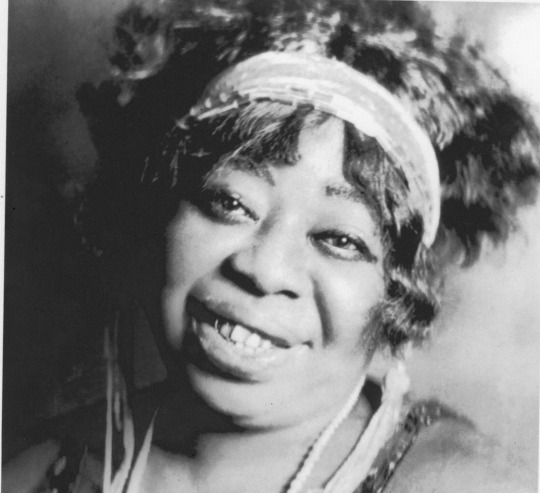
A queer, Black, influential female singer and songwriter of the 1920s. She was the first popular stage entertainer to incorporate authentic blues into her song repertoire and became known as the "Mother of the Blues!” With her unapologetic lyrics, Rainey proudly proclaimed her bisexuality and helped to mainstream Black female narratives in a musical style that later became a nationwide craze.
Bessie Smith
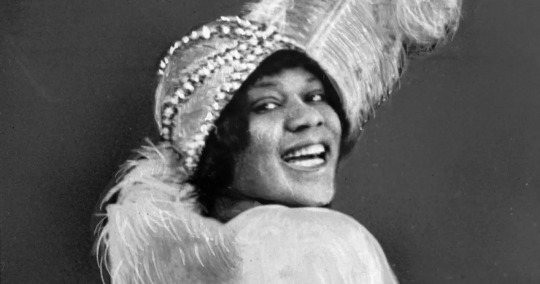
The Black, queer, “Empress of the Blues” who began as Ma Rainey’s protegé, later became the most popular female blues singer of the 1920s and 1930s! She wrote songs about liberated women, and had a plainspoken style that foreshadowed rap, and was a major influence on fellow blues singers and jazz vocalists.
Sister Rosetta Tharpe
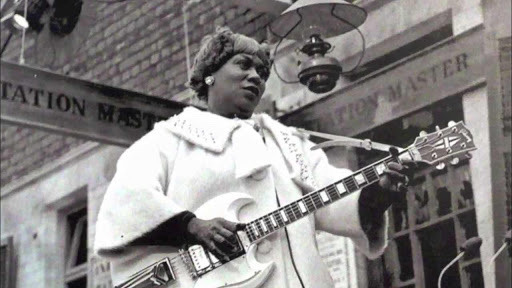
The “Godmother of Rock and Roll!” A Black, queer, guitar-playing gospel singer, who paved the way for Elvis, Chuck Berry, and influenced everyone from Miranda Lambert to Bob Dylan! She crafted the sound in the 30s and 40s, her gospel recordings were characterized by a unique mixture of spiritual lyrics and rhythmic accompaniment that was a precursor of rock and roll. F*ck the Beatles, Sister Rosetta is the original rocker!
Willie Mae “Big Mama” Thornton
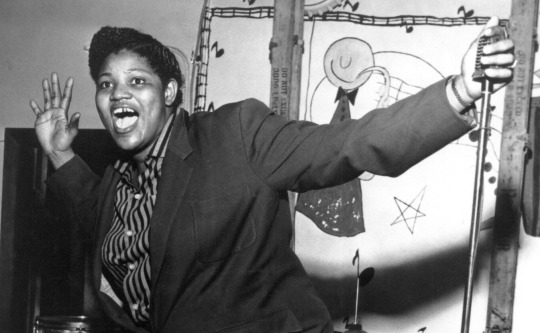
A Black female (and gender non-conforming) drummer, harmonicist, singer and songwriter of the 1950s! She was a formative figure in the rhythm and blues genre. The songs “Hound Dog” and “Ball and Chain” became huge hits for Elvis Presley and Janis Joplin in later years, but Big Mama Thornton sang them first!
Israel Kamakawiwo'ole, or “Bruddah Iz”

A Native Hawaiian `ukulele player, singer-songwriter, and activist, who is best known for his beloved rendition of “Over the Rainbow” in 1988 and forever changing the face of Hawaiian music. Through his joyful songs and lifelong advocacy for the islands’ values and culture, Kamakawiwo`ole has been widely referred to as the “Voice of Hawai`i!”
And now for some up and coming musicians!
Tedy
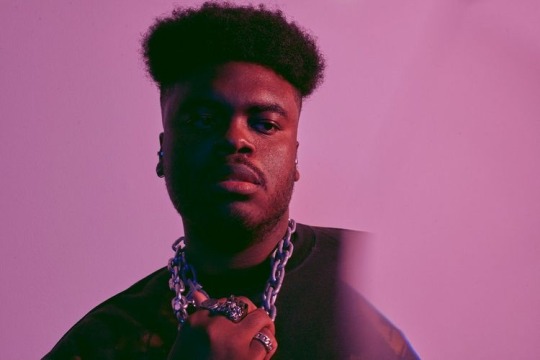
Tedy is a Haitian immigrant, who has moved around from various cities in both America and Canada. Originally a Youtuber, Tedy is a budding musician with little background in songwriting, but you’d never know it. He cultivated his distinct, soulful and explosive musical style by drawing on melodies and sounds he picked up throughout his life and his exposure to different cultures. Tedy released the singles “Can I” in 2016, and “Hold on Tighter” in 2018. Now signed to Sony Music, Tedy is back with the new EP Boys Don’t Cry. The emotionally charged track rides an expressive journey through feelings of fear, sadness, acceptance, and finally empowerment. Be sure to give it a listen!
Spotify | IG | Twitter | Soundcloud
G.R. Gritt

G.R. Gritt is a Juno Award winning, Two-Spirit, Transgender, Anishinaabe/Metis artist. They reclaim space through songs that show that intersectional identity is expansive and not to be divided into parts. By exploring the emotional and cultural core of their heritage as a non-binary, queer, Indigenous artist, they create new space and encourage others to do the same. Gritt is currently preparing for the release of a new full-length album titled, Ancestors, on Coax Records. Their first single, “Quiet Years” is out now! Check it out!
Website | Spotify | IG | Twitter
Brittany Howard

Brittany Howard is known for being the lead vocalist, guitarist, and main songwriter of rock bands Alabama Shakes and Thunderbitch. In 2019, she struck out on her own to write and produce a record that comes from the perspective of a queer, mixed-race woman, born to a Black father and white mother in the same city as the founder of neo-Nazi message board Stormfront and a former Grand Wizard in the Klan. Jaime, named in memoriam after Howard’s late sister, is a soul record built for and by our turbulent times, seeking humanity. Listen to it now!
Soundcloud | Spotify | IG | Twitter | Website
Tunde Olaniran

Tunde Olaniran is a Nigerian-American, gender non-comforming artist from Flint, Michigan. They have quickly embedded themself into the Detroit music scene; a singer, rapper, dancer, choreographer, producer and activist. Their music abandons all preconceptions of what pop can be. Their thematically-rich 2018 record Stranger supplied plenty of rhythms to exercise Olaniran’s voice, as they waxed poetic about what it means to be known. Their lyrics contain multitudes; they can speak on the Black experience, Celine Dion, and science fiction, and float seamlessly between subjects with grace. Their new single, “WDIWHI,” just came out in November! Give it a play!
Spotify | Soundcloud | IG | Twitter | Website
Crys Matthews
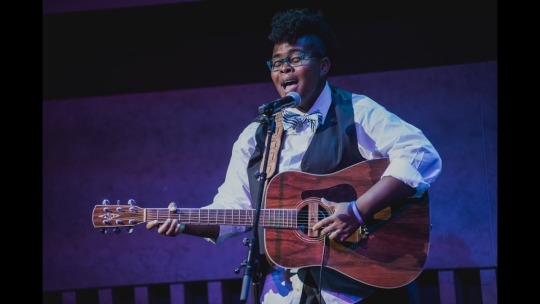
Crys Matthews is a queer, Black singer and songwriter who blends Americana, folk, jazz, blues, bluegrass and funk into a bold, complex performance steeped in traditional melodies. Her two 2017 releases, a full-length album called The Imagineers, about love and life, and an EP called Battle Hymn for an Army of Lovers, which tackles social justice themes. Over the summer, she released a single titled “Six Feet Apart” with Heather Mae (another amazing fat musician!!) as well as their virtual Pride tour ‘The Singing OUT Tour’, which allowed others to continue to celebrate the LGBTQ+ community from the safety and comfort of their own homes. “Six Feet Apart” is a stunning concoction of Mae’s soulful vocals and Matthews’ organic tones, fused to form a beautiful release with a relatable narrative. Be sure to listen and give Crys some support!
Spotify | IG | Twitter | Website | GigglesForGeorgia
Also, check out this great article by Sydneysky G (@blackfatqueer on twitter) to read about more fat, Black, female pioneers of music!
#musicians#fat representation#fat musicians#people#fat positive#fat positvity#fat liberation#music#rock#r&b#music history#lgbt#musicians of color#inbox
2K notes
·
View notes
Text
“ The Golden Age of Egyptology Was Also a Time of Plunder

It was the bust of Nefertiti, Toby Wilkinson writes, that “came to represent for Egyptian nationalists the exploitation and appropriation of their history by foreigners — a perennial insult that had gone on for more than a century.”Credit...Andreas Rentz/Getty Images
By Rosemary Mahoney
Oct. 22, 2020
A WORLD BENEATH THE SANDS
The Golden Age of Egyptology
By Toby Wilkinson
No civilization has visited itself upon the Western imagination as powerfully as that of ancient Egypt. With its fathomless mystery, its architectural majesty, its artistic inspiration, civic order and sheer volume of wealth, ancient Egypt has captivated us and compelled us not just to understand it but to possess it — to literally grab our shovels, dig up its stuff and haul it home with us.
Who’s “us”? By all accounts just about everybody in history who found himself in Egypt while the digging was easy, and even long after Egyptian law made it difficult. The idea was that possession of a nice piece of ancient Egyptian art would lend a stamp of legitimacy — a greater greatness, let’s say — to any empire or, indeed, any private back garden in Dorset. The Greeks pondered it, the Romans started it and various Europeans got awfully good at it. But, as the Egyptologist Toby Wilkinson demonstrates in his excellent new book, “A World Beneath the Sands,” nobody in history succumbed more feverishly to the compulsion to take hold of ancient Egypt nor succeeded at it more thoroughly than the British and the French.
Wilkinson’s ambitious focus is the hundred years of Egyptology between Jean-Francois Champollion’s groundbreaking deciphering of the Rosetta stone in 1822 and Howard Carter’s sensational discovery of the tomb of Tutankhamen in 1922. During that century of exploration and excavation the science of Egyptology was shaped as much by benevolent curiosity and genuine scholarly interest as by the cutthroat imperialist rivalry between Britain and France.
Both nations had a burning desire to best the other in the struggle to gain control of Egypt politically and archaeologically, and both used the Egyptian collections in their national museums — the Louvre and the British Museum — as the measure and symbol of their success. Whoever seized the biggest statues and tallest obelisks, whoever got the best and the most of Egyptian antiquity and lugged it home and filled their museum with it would be the de facto winner. Winner of what exactly isn’t Wilkinson’s present concern, but his evidence suggests it meant more than just colonial expansion or the crucial access to India that Egypt offered. The bitter contest was, it seems, as much pathological as it was practical.
Though the 19th century produced the most wondrous discoveries and greatest scholarly achievements in Egyptology, it was also an era of great hubris and pillage and greed, during which countless antiquities were lost, stolen or destroyed by reckless excavation, rapacious haste and the general indifference of the Egyptian leadership.
The quiet yet salient revelation of Wilkinson’s study — and what makes the story of 19th-century Egyptology relevant now — is how the Anglo-French obsession with Egypt’s past and their frantic bid for control of its future gradually spurred the downtrodden modern Egyptians toward a newfound self-awareness and a galled desire for independence after nearly 2,000 years of foreign occupation and oppression. “As the West rediscovered Egypt,” Wilkinson writes, “so Egypt discovered itself.”
All the fascinating giants of Egyptology appear here. Some were brilliant scholars genuinely eager to advance the science of Egyptology and forge a deeper understanding of ancient Egypt, some were self-serving fortune-seekers who cared mainly about their own advancement, and some were both at once.
There’s Champollion, who, on unlocking the Rosetta stone and revealing the secret of hieroglyphics after years of scholarly struggle, was so overcome with emotion and fatigue he collapsed to the floor in a faint. And Giovanni Battista Belzoni, the Italian strongman and one-time circus performer who in 1817, under the aegis of the British consul, managed to drag, float and sail the 2.7-meter-high, 7¼-ton bust of Ramses II all the way from Luxor to the British Museum. And the British Army officer Richard William Howard Vyse, who, with no previous training in archaeology, used gunpowder and dynamite to blast away at the Pyramids in search of an entrance, then bored a hole 27 feet deep into the back of the Sphinx hoping (in vain) to find a chamber within.
We learn too of the shrewd and influential French archaeologist Auguste Mariette, who in 1851 unearthed the fabulous Serapeum at Saqqara. Never mind that his excavations were illegal, that he produced fakes to placate antiquities inspectors, nor that he used grain sacks to smuggle hundreds of objects he found at the site and surreptitiously shipped them off to France. Though widely accused by his British competitors of theft and destruction in his excavations, in 1858 Mariette was appointed director of the newly founded Egyptian Antiquities Service, which he conceived, with the directive from Said Pasha to “ensure the safety of the monuments.”
As for Ernest Alred Thompson Wallis Budge, when sent to acquire antiquities for the British Museum, he too bribed the police, bought stolen artifacts from illicit dealers, stole, smuggled and justified his actions in the same way countless archaeologists and amateur scavengers have justified theirs: “The objects would have been smuggled out of Egypt all the same; the only difference would have been that instead of being in the British Museum they would be in some museum or private collection on the continent or in America.” In other words, they would have ended up someplace quite like his own, and how, pray, could anybody want that? It’s an amusing characteristic of all the players in these hundred years of excavation that every one of them claimed ample reason for removing antiquities from Egypt, legally or illegally, yet howled with outrage when anyone else did the same.
Where were the Egyptians when all this plunder of their heritage was taking place? They were there under the heels of their visitors, providing cheap or, when the labor was enforced, as it often was, free labor for the crushing work of archaeological excavation. In exchange they were characterized as ignorant, lazy, abject and shiftless. If they sought to make a few pence by pilfering a piece from an excavation site, they were severely punished.
The European stronghold on Egyptian archaeology was so firm that not until 1909 were Egyptian citizens of means allowed to sponsor formal excavations in their own country. As for the Egyptian leadership, from Muhammad Ali to King Fuad, few Egyptian leaders held the nation’s antiquities in much regard; they blithely quarried ancient monuments for the stone to build modern factories and casually tossed precious objects to the British and the French in exchange for loans and political favors.
In 1912, a growing ripple of Egyptian nationalism became an outraged wave when the exquisite painted limestone bust of Nefertiti (“fresh as the day it had been made 35 centuries before”) was discovered at Amarna by a German excavation team and promptly removed to Berlin. “More than the Rosetta stone,” Wilkinson writes, “or the Dendera Zodiac, the Luxor obelisk or Cleopatra’s Needles … the bust of Nefertiti came to represent for Egyptian nationalists the exploitation and appropriation of their history by foreigners — a perennial insult that had gone on for more than a century.”
We hear a lot now about “cultural appropriation,” a term lately fired with reflexive ease at even the slightest cultural crossover. This, however, was a frenzied, long-term, all-out cultural heist, complete with government-funded pistols and getaway car — one of many in the greater schemes of world history.
This is a riveting, sometimes appalling story. I think it’s important to say that Wilkinson’s prose style is so smooth and straight and unadorned as to be nearly nonexistent. In fact, as I closed the book I wondered fleetingly in exactly whose company I had just spent hundreds of pages, for as a writer, Wilkinson draws little attention to himself and only now and then opines. With another sort of story this could be considered a flaw. Here, it’s a strength. Wilkinson is a consummate historian. As such, he needs no histrionics or mood music to hold the reader’s attention or spin his tale along. He has mastered the facts with painstaking research and allowed them to speak for themselves. Rarely do facts speak this clearly.
Rosemary Mahoney is the author of six books, including “Down the Nile: Alone in a Fisherman’s Skiff.” She is at work on a memoir.
A WORLD BENEATH THE SANDS
The Golden Age of Egyptology
By Toby Wilkinson
Illustrated. 510 pp. W.W. Norton & Company. $30.”
Source: https://www.nytimes.com/2020/10/22/books/review/a-world-beneath-the-sands-toby-wilkinson.html#:~:text=The%20Golden%20Age%20of%20Egyptology%20Was%20Also%20a%20Time%20of%20Plunder
42 notes
·
View notes
Text
Getting to Know the Rainbow Girls
Getting to Know the Rainbow Girls

Vanessa May, Erin Chapin, and Caitlin Gowdey are three exceptionally talented musicians who have bonded together in friendship and are making some beautiful sounds together. They call themselves the Rainbow Girls and their stellar musicanship and angelic voices blend together to impress and entertain all who are lucky enough to see them perform or listen to their music. The band was formed in…
View On WordPress
#BeeGees#Bessie Smith#Brittany Howard#Folk Alliance International#Gillian Welch#Jackson Browne#Jeff Buckley#John Vandiver#Joni Mitchell#Levon Helm#Nina Simone#Sister Rosetta Tharpe#The Beatles.#The Rainbow Girls#Wird Al Yankovic
0 notes